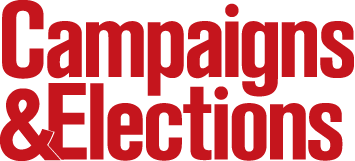Resource Library

The New Electorate Has Arrived…So How Do You Target It?
By Craig Charney | Campaigns & Elections | January 1, 2009 | 2 pages
American voters’ fastgrowing diversity, along with sharper targeting and mobilization of minorities and immigrants, is tipping the electoral balance of power in more and more cities and states. In 2008, the presidential and senatorial outcome in several key states was determined by tsunamis of minority votes for Democrats.
These changes present big challenges. Campaigns will have to find minority and immigrant voters, bridge cultural barriers to reach them, and decide how to model voting amid uncertain registration and turnout rates. These challenges can be met by those who learn to stretch. Those who don’t may find themselves in the “losers” column.
Targeting Minorities Means Finding Them
So what are the challenges? To begin with, finding minority and immigrant voters to poll can be much more difficult than with the general public. The digital divide limits online access to less educated minorities, like Latinos or Haitian-Americans. Focus group recruiters, usually more focused on middleclass consumers, often lack minorities on their lists. And fear among people who came from repressive lands can make immigrants reluctant to answer political polls. But for researchers and campaigns willing to try harder (and spend a bit more), there are solutions.
Since minority and immigrant groups usually concentrate in certain neighborhoods, once these are identified from census or other data it’s possible to focus calling on areas with high yields. For qualitative studies, or polls where projection to population is not essential, it’s possible to buy lists of those with the relevant ethnic surnames. For instance, when a Chicago focus group center drew a blank in its database for the recruit on a study we were doing of American Muslim attitudes, we bought a list of Pakistani and Arabic-named residents—which made recruiting a breeze.
Finally, minority and immigrant networks and organizations also offer ways into closed communities. The key here is not necessarily to have a consultant drawn from that community— though that can help—but rather to have one who has good contacts in the target community.
When we had to do a study of refugees from Kosovo, for example, we worked with an AlbanianAmerican women’s group to recruit focus group members. After panicked recruiters told us on a Friday they had just two recruits for a focus group of African immigrants we had planned to conduct the following Monday, we arranged with ministers at churches they attended to ask congregants from the pulpit to cooperate with our recruiters—who were stationed outside. We had an overflow group the next day.
To Reach Immigrant Voters, Speak their Language
English-only polls miss a huge chunk of the Hispanic population. Same goes for the growing Asian, African, Arab and Haitian immigrant communities. In U.S. telephone surveys, we routinely interview in Spanish as well as English – and one-third to one-half of Latinos prefer Spanish.
Other languages are harder to come by, but specialized multilingual calling houses, like International Point of Contact, do exist. For one New York City poll, they did a first-rate job translating questionnaires and calling for us in Spanish, Russian, Haitian, Creole and Chinese.
But just the language isn’t enough—the question is also the variant or dialect your targets speak! There are differences in vocabulary between every Spanish-speaking country, so make sure your translator is writing the right Spanish! Once, one of ours translated “health insurance as “Seguridad Social” – Social Security”—which is absolutely correct correct where she comes from, Argentina. But if we hadn’t caught it, it would have made the question incomprehensible for a Hispanic-American audience.
Cultural Awareness is a Must
If you offer a noontime focus group of Arab-American women a spread of food and drink during Ramadan (the month Muslims are not supposed to touch either from dawn ‘til dusk), you’ll have an angry group on your hands. Trying to do a poll in a heavily Indian community close to Election Day? Better avoid Diwali, the leading Hindu holiday, which can fall right around then. Should a man offer to shake the hand of a Chinese group participant or let her offer her hand first? If you don’t know, you’d better find out beforehand.
Cultural awareness extends to voting patterns, too. Pollsters must take into account the fact that smaller proportions of nonwhites than whites have traditionally registered and voted. Participation in 2004, for example, was 7 points lower among blacks than for whites, 20 points lower for Latinos and 23 points lower for Asians. Yet they can also surge to the polls in proportions that swamp previous voting models.
In recent New York and Los Angeles mayoral elections, Latino candidates doubled their turnout, and Obama’s presence had a dramatic effect on voting patterns. So minority and immigrant turnout tends to be more volatile than that of whites, making it both harder—and essential—to model.
It’s just as important to figure out when electoral tides are receding—like when lower black turnout saved Chambliss’ seat in the Georgia runoff in December—as when they are running high.
The presence of a first-time minority candidate is one key flag. Others include up-ballot races, new minority registration, interest in the election, and previous voting patterns as well as declared voting intentions.
In 2008 the stakes involved in targeting minority and immigrant voters were higher than ever before, and they will only grow in the years ahead. Politicians and consultants who learn how to model these voters will reap gains. Those who ignore them will do so at their peril. Ask John McCain—or Saxby Chambliss.
Craig Charney is president of Charney Research, a New York polling firm specializing in multicultural political polling and market research.
